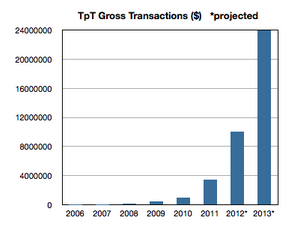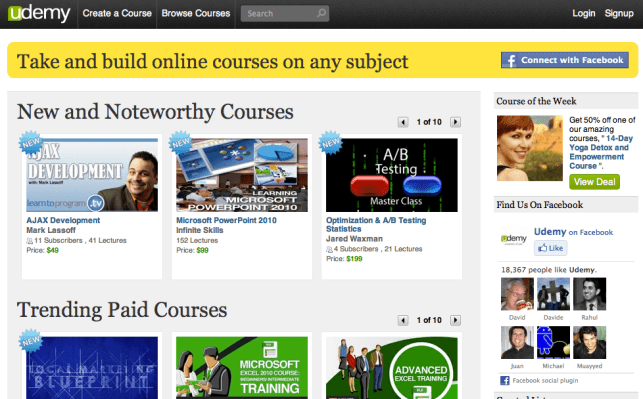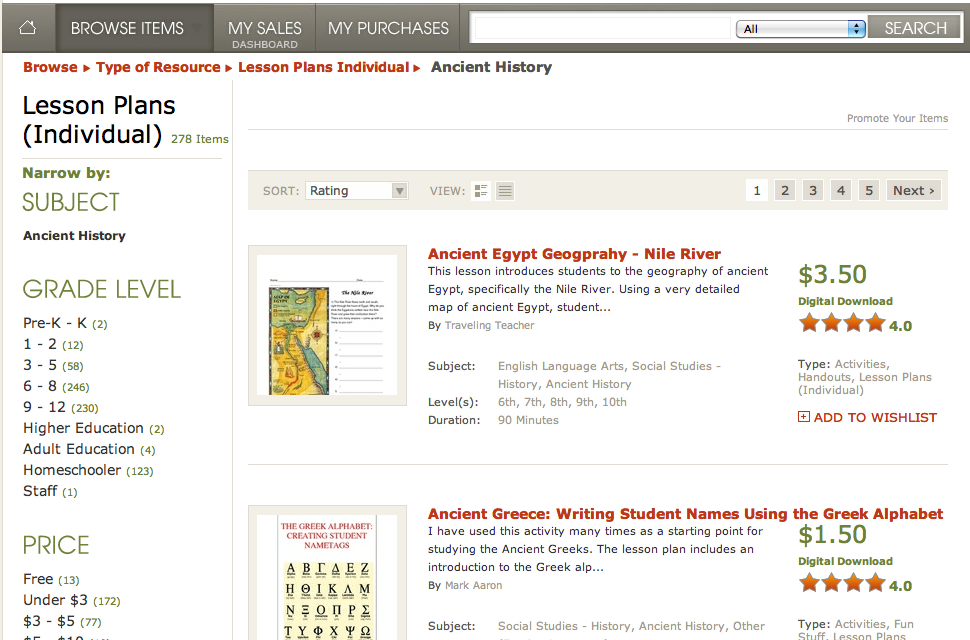Teaching. In spite of George Bernard Shaw’s now infamous “those who can’t do” proverb, teaching is one of the most important professions out there. Even for the many self-taught coders among us, at some point along the way, we’ve all had our lives shaped by a great teacher — in the classroom, or out. That’s why, on the whole, teacher compensation in the U.S. is embarrassing. To pick on marketers, some might see the fact that the average marketing manager makes twice the average salary of most teachers as just a wee bit backwards.
Luckily, there are a number of startups that are starting to change that, thanks to the Web and the growing popularity of open, online educational platforms. For example, Udemy, a web platform that allows anyone to host and take online classes, this morning announced that its top ten instructors earned a combined $1.6 million over the last 12 months.
Of the top ten, all made over $50K in the last year, with highest earner at over $200K. Though Udemy courses focus on everything from design and corporate training to programming, most of Udemy’s top ten teach courses on the latter and are heavy on entrepreneur-focused content. And given the popularity of CodeAcademy and others, this isn’t surprising.
And the number of platforms offering or facilitating online courses, video and otherwise, (often free) is growing fast, including Khan Academy, 2tor, Udacity, Pathwright, StraighterLine, TED Ed, Course Hero, etc. Considering the high cost of education, the more, the merrier.
But the number of platforms where teachers make money is far smaller. Udemy offers courses for free, or for $20 or $250 a pop, and take 30 percent of those fees. Since Udemy is available to all teachers, and content on most subjects, there’s a lot of potential, and based just on the platform’s top earners, the startup is making money.
Give teachers technology that makes their lives easier, flips their classrooms, or allows them to make extra income, and you’re on the right track. It’s a little known secret that teachers are/can be extremely active and supportive early adopters. ShowMe’s CEO San Kim talks about this a lot. Given this to be true, it’s no surprise that Engrade founder Bri Holt told us that, since teachers generally don’t get much discretionary spending from schools, they tend to pay out of pocket for new technologies.
While they love to be early adopters and early testers, Holt says that banking on teachers isn’t such a great business model. Instead, for ed software (as in Engrade’s case), make schools and districts pay — they have budgets. Or, there’s Top Hat Monocle, which is finding success (surprisingly) charging students for their learning tools, while teachers use it for free.
If not saving teachers money, then help them make money. Of course, for Udemy, most of those instructors outside the top ten aren’t making nearly enough for it to be a full-time salary, and those who do make money are generally experts — established names. It’s a model that’s been proven out by Lynda.com, which has been around for years, and saw $70 million in revenue last year without having taken a penny of outside funding.
Lynda.com makes sure that the quality of its affordable, paid online course material is high by hand-picking instructors who are experts in their field. And not just experts, but those who are experts and great teachers, which don’t always go hand-in-hand. But the Lynda co-founders told us that nearly 90 percent of its educators earn their entire annual income by producing videos for the platform.
But it’s not only video. One big, under-the-radar success story is TeachersPayTeachers, an open marketplace in which teachers can buy, sell, and share their original lesson plans. Like Lynda.com, the startup is not only making money, it’s profitable and self-sustaining without having taken any outside investment.
Teachers on the site passed $7 million in earnings last week, with the highest earner (a kindergarten teacher from Georgia named Deanna Jump) having made a total of $700K on the platform. She’s currently earning $60K per month, the startup’s founder Paul Edelman tells us. Yep.
 For a historical perspective, Edelman tells us that, in 2011, teachers on its platform collectively made $3.4M. Today, that’s jumped to $7 million, and since sales are growing at an average of 300 percent annually, the founder expects to hit $10 million by the end of the year and $24 million in 2013. Edelman has to be feeling good about the way things have worked out.
For a historical perspective, Edelman tells us that, in 2011, teachers on its platform collectively made $3.4M. Today, that’s jumped to $7 million, and since sales are growing at an average of 300 percent annually, the founder expects to hit $10 million by the end of the year and $24 million in 2013. Edelman has to be feeling good about the way things have worked out.
A former teacher, Edelman launched TeachersPayTeachers in 2006 and sold it to Scholastic later that year. But the recession saw the site’s growth dwindle, so Edelman offered to buy the site back from its acquirer. Scholastic agreed, and it’s been profitable ever since.
As to the business model? The site is subscription-based, with two plans: A free option, which gives teachers 60 percent of all sales, and a premium membership that runs $57 a year and allows teachers to keep 85 percent of their earnings. Compare that to Udemy’s flat 30 percent cut, Pathwright’s 4 percent cut of sales, and Lynda’s $25 subscriptions (granted these three sites focus on courses, not lesson plans), and it might seem surprising that TeachersPayTeachers is growing like it is.
But Edelman tells us that the site hit 700K registered teachers last week, which is about the same number of teachers as the popular, venture-backed Edmodo, and 3.5x the size of Udemy’s entire user base.
Regardless, each of these sites, along with WeAreTeachers — an online community for teachers which allows them to collaborate and submit ideas for cash and prizes — are finding traction, adoption among the world’s savvy educators, and more importantly, are offering them supplementary online revenue streams. It’s still too early to say just how big these platforms will become, but with startups like Pathwright and Udemy opening the doors of online courses to one and all, there’s a lot more competition for eyeballs and dollars ahead.
For more on Udemy’s high earners, go here, and for TeachersPayTeachers at home, go here

